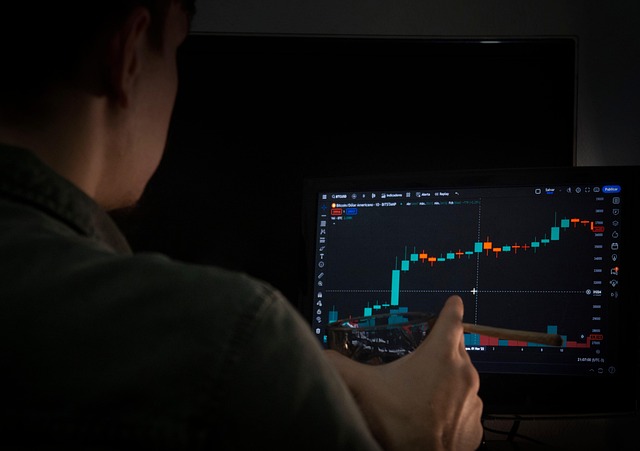Introduction: Risk is Part of the Game
Cryptocurrency is volatile by design. It’s a market driven by speculative sentiment, rapidly shifting tech, and evolving regulations. Unlike traditional markets, crypto runs 24/7 without circuit breakers. One tweet, one legal filing, or a software bug can send a coin’s value into free fall—or to the moon. That unpredictability isn’t a bug. It’s the core feature of an emerging, decentralized system still finding its place.
But not all risk is the same. There’s a difference between calculated risk and reckless speculation. Calculated risk means doing your homework, diversifying your assets, and sticking to a clear strategy. On the other hand, rushing to ape into the latest meme token because of a hype video on Twitter? That’s speculation with blinders on.
The reality: you can’t eliminate risk in crypto. That’s not the goal. The smart move is learning to manage it—through research, structure, and patience. Your job isn’t to predict every move the market makes. It’s to make sure one bad move doesn’t wipe out your entire position.
Understand What You’re Investing In
Cryptocurrency investing is more than just buying coins with catchy names—it’s about understanding the underlying value of what you’re buying. Before committing funds to any digital asset, take time to dig into the project itself.
Do Your Research
Before investing, get familiar with the crypto project’s foundational elements:
- Read the whitepaper: This is the blueprint of the project. It should clearly outline the mission, use case, technology, and problem it aims to solve.
- Evaluate the use case: Ask how this project brings real-world value or innovation. Does it solve a unique problem? Who is it for?
- Research the team: Check the credibility, expertise, and transparency of the people behind the project. Real names and verifiable experience count.
Avoid the Hype Trap
The crypto market is often driven by trends, influencers, and speculative buzz. To manage risk, it’s critical to separate signal from noise:
- Don’t buy just because a coin is “trending” or mentioned on social media.
- Question projects that lack clear documentation or overpromise.
- Remember: sustainable value beats viral popularity every time.
Focus on Fundamentals
Trending tokens can be tempting, but long-term success lies in solid tech and utility:
- Choose projects with robust infrastructure and active development.
- Look for strong community support and consistent updates from the team.
- Ecosystem compatibility, scalability, and security are more important than marketing hype.
Invest with intent—not impulse. Knowing what you’re putting money into is the first and most important step in managing crypto risk.
Diversify Your Portfolio
Putting all of your crypto holdings into one asset might seem like a bold move, but it’s a dangerous one. Digital assets come with high volatility, and even top projects can face short-term slumps or long-term challenges. Spreading your investments helps cushion the blow if one asset underperforms.
Why Concentration Is Risky
Investing heavily in a single coin exposes you to heightened market swings. Even major coins like Bitcoin or Ethereum can lose significant value in a matter of hours. Diversification doesn’t eliminate risk—it helps spread it, so one poor performer doesn’t sink your entire portfolio.
Key risks of over-concentration:
- Exposure to single-point failure (e.g., a hack or team scandal)
- Higher volatility impact on your overall holdings
- Missed opportunities in other growing sectors
A Smarter Approach to Allocation
Instead of betting on one asset, diversify your portfolio across multiple categories:
- Bitcoin (BTC): Often treated as the anchor or ‘digital gold’ of the crypto space
- Ethereum (ETH): Foundation of smart contracts and DeFi innovation
- Stablecoins: Provide price stability and a buffer from volatility
- Promising Altcoins: Projects with real utility or strong development teams
This approach balances risk among different types of assets and keeps you more resilient during downturns.
Rebalancing: Stay Aligned With Your Goals
Crypto markets shift rapidly. Rebalancing helps you maintain your intended level of risk exposure. For example, if one coin suddenly surges and takes up 60% of your portfolio, it may be time to sell some and redistribute that capital.
Basic rebalancing strategies:
- Set fixed allocation targets (e.g., 40% BTC, 30% ETH, 20% stablecoins, 10% altcoins)
- Revisit your portfolio monthly or quarterly
- Adjust based on changes in risk tolerance or market outlook
Want help identifying solid altcoin picks? Check out this guide: Identifying Promising Altcoins: A Strategic Guide
Use Secure and Trusted Platforms
If you’re serious about minimizing risk in crypto, start with where you store and trade your assets. Not all platforms are created equal. Reputation matters. Stick with major exchanges that have a track record of transparency, uptime, and solid customer support. The same goes for wallets—hardware wallets and battle-tested apps beat sketchy newcomers every time.
Security isn’t just the platform’s job—it’s yours too. Set up two-factor authentication (2FA) on every account. Use unique, strong passwords. Don’t store everything online. Cold storage (offline wallets) is your best friend for long-term holdings.
Scams aren’t rare—they’re constant. Phishing emails, fake sites, shady DMs—they only need you to slip up once. Get in the habit of double-checking URLs, avoiding unknown links, and ignoring offers that sound too good to be true. Vigilance is part of the game. Crypto doesn’t forgive carelessness.
Manage Position Sizing
The first law of crypto risk management is blunt: never invest more than you can afford to lose. That’s not just a disclaimer—it’s a guiding principle. Treat every dollar in crypto like it might vanish tomorrow, because sometimes it does.
This is where position sizing comes in. Allocate your capital based on risk tolerance, not excitement. If a trade feels like a coin flip, size it accordingly. Use stop-loss orders to automatically cap potential losses, and never enter a position without a clear exit plan. Whether your strategy is based on price targets, timeframes, or market signals, write it down before you start. Then follow it.
Emotions are the silent killers in this game. FOMO, panic-selling, revenge trading—all of it costs you more than a red candle ever could. Stick to your framework. Be the one with a plan when others are losing their nerve. That’s how the serious players stay in the game.
Stay Current with Market Trends and News
Being informed is one of the most underrated risk-management tools in crypto investing. The market moves fast—with new protocols launching, regulations shifting, and sentiment flipping overnight. Staying in the loop can help you avoid costly missteps and spot early opportunities.
Why Ignorance Equals Risk
Crypto’s volatility isn’t just about price swings—it’s also driven by news cycles, technical developments, and exchange performance. If you’re not paying attention, you’re making blind bets.
- Major news events (like exchange hacks or regulatory crackdowns) can trigger rapid market shifts
- Missing updates on project changes or consensus bugs can lead to bad investment decisions
- Ignorance can leave you holding bags others have already exited
Sources You Can Actually Trust
Avoid noise. Build a core set of reliable resources you monitor consistently:
- Reputable crypto news outlets (e.g., CoinDesk, The Block, CoinTelegraph)
- Official project blogs and GitHub repositories
- Government and financial regulatory announcements
- Thought leaders with transparency and a track record—not anonymous pumpers on social media
Tip: If the information can’t be verified from two independent sources, think twice before acting on it.
The Macro Matters
Crypto doesn’t operate in a vacuum. Everything from inflation rates to global conflict can influence the market.
- Rising interest rates may reduce appetite for riskier assets like cryptocurrencies
- Crackdowns in one country can ripple across international markets
- Positive developments like ETF approvals or government adoption can fuel bullish sentiment
Stay informed, stay adaptable. Your awareness is a key layer of protection in a fast-evolving environment.
Watch for Red Flags
Scams in crypto rarely show up looking like scams. They wear clean branding, promise easy wins, and build hype fast. One major red flag? Projects that offer “guaranteed returns.” This space is volatile by nature—nothing is guaranteed. If a token or platform promises fixed rates or zero-risk profits, that’s a red flag, not a feature.
Beware of ghost teams too. If you can’t verify who’s behind a project—no LinkedIn profiles, no interviews, no history—you’re flying blind. Reputable projects have doxxed developers or at least a trackable record. When everything is anonymous and unverifiable, the exit door is usually wide open for founders to vanish.
Also, steer clear of weak documentation. If all you’ve got is a flashy website and a PDF one-pager full of buzzwords, that’s not enough. Solid crypto projects release whitepapers, roadmap updates, and maintain developer communication channels.
When the basics aren’t in place—transparent leadership, clear communication, realistic promises—walk away. High-quality investments don’t need to overpromise or hide.
Plan for the Long Game
If you’re chasing quick flips in the crypto market, expect stress. Short-term trading is high-risk by nature. Prices can swing hard in minutes, and if you’re glued to charts 24/7, the mental toll adds up fast. Some thrive in that chaos, but for most investors, it’s not sustainable.
Long-term investing, on the other hand, is slower—but smarter. It’s about backing strong projects with solid fundamentals and letting time do the heavy lifting. When you zoom out, patterns emerge. Market cycles make more sense. With a broader perspective, short-term dips feel less like disaster and more like noise.
The game isn’t timing the perfect top or bottom—it’s staying in the game long enough to let your thesis play out. Risk doesn’t disappear, but it becomes something you can manage—not panic over.
Conclusion: Make Discipline Your Edge
There’s no getting around it—crypto will always carry risk. Markets are fast, often irrational, and influenced by forces you can’t control. But risk doesn’t have to mean recklessness. What separates long-term winners from the rest isn’t luck—it’s discipline.
Successful investors treat crypto like a craft. They stick to a system: doing the research, managing their exposure, and avoiding the sugar high of hype cycles. When the market swings, they don’t panic or chase—they execute. That consistency is the difference between growing your portfolio and wrecking it.
In this space, your biggest asset isn’t some hidden altcoin or timing the next pump. It’s your mindset. Stay skeptical. Stick to your framework. Respect the risk, and let discipline do the heavy lifting.

 Founder & Editor-in-Chief
Founder & Editor-in-Chief
